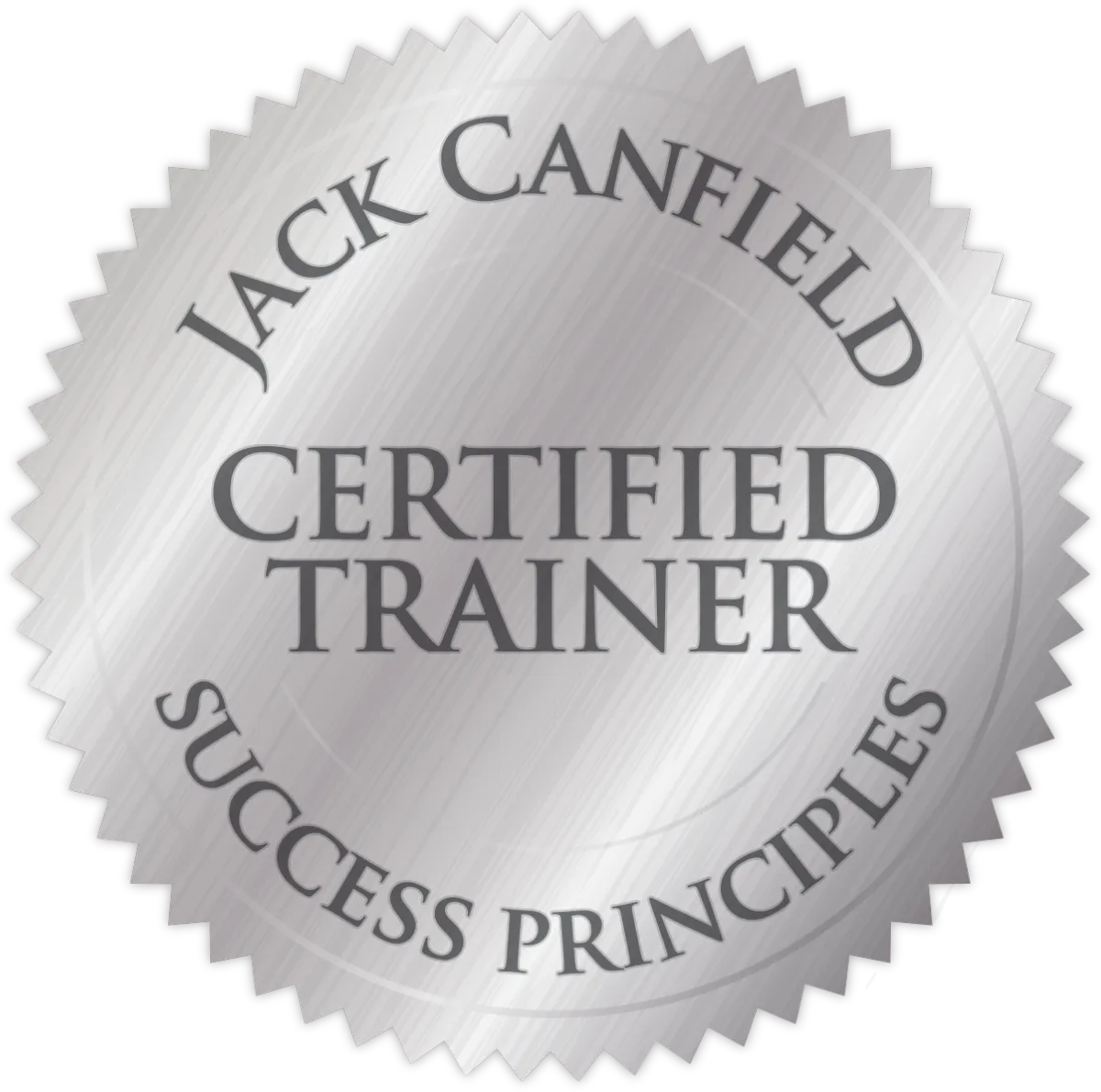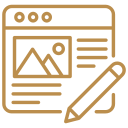Watch The Journey
BLOG
Elevating Your Email Marketing with Advanced Techniques
Wednesday, June 26, 2024
Jeremy Coates
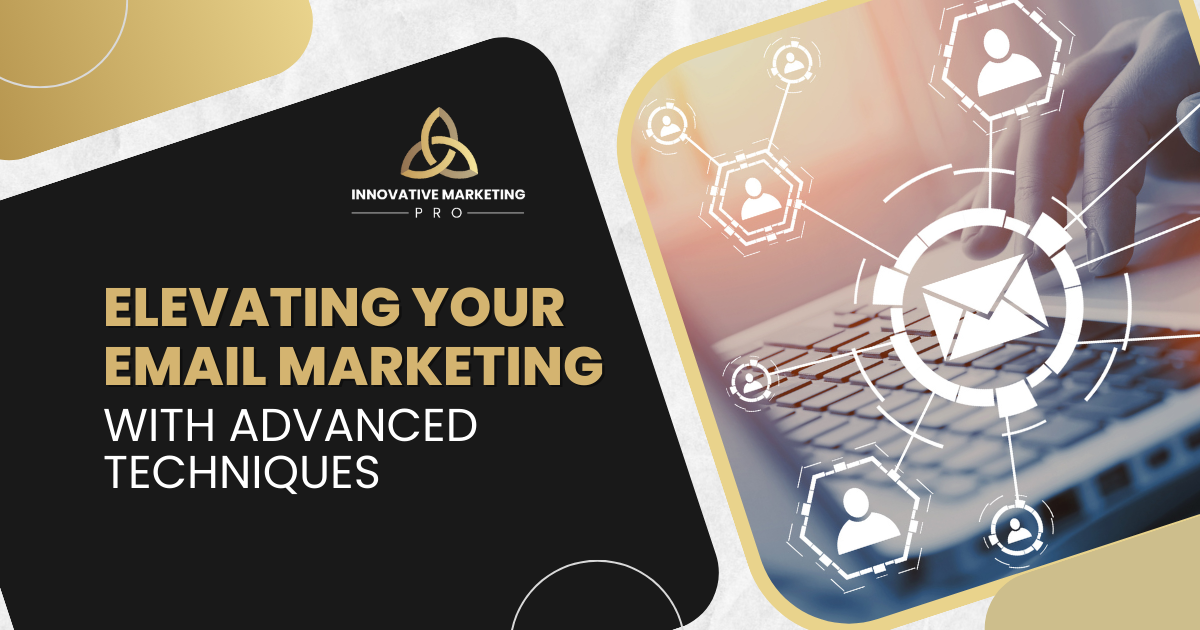
Captivating Your Audience from the Start
Unlocking the Power of Segmentation
When it comes to email marketing, one size definitely does not fit all. Segmentation, the practice of dividing your email list into smaller, more targeted groups, is a powerful technique that can transform your marketing efforts from generic to highly personalized and effective. Let’s explore why segmentation is crucial, the different types of segmentation you can use, and the tools and strategies that make it all possible.
Why Segmentation is Crucial for Targeted Marketing
Segmentation allows marketers to tailor their messages to specific groups within their audience, increasing relevance and engagement. Here’s why it’s indispensable:
Increased Relevance: By sending tailored content to specific segments, your emails are more likely to resonate with recipients, leading to higher open and click-through rates.
Better Engagement: Segmented emails often see higher engagement rates because they address the specific needs, interests, or behaviors of the recipients.
Improved Conversion Rates: Targeted emails are more effective at driving conversions since they deliver the right message to the right person at the right time.
Reduced Unsubscribe Rates: When recipients find the content valuable and relevant, they are less likely to unsubscribe, maintaining a healthy email list.
Exploring Different Segmentation Types
Effective segmentation goes beyond basic demographic data. Here are three powerful segmentation types that can elevate your email marketing strategy:
Demographic Segmentation:
What It Is: Grouping your audience based on demographic factors such as age, gender, income, education, and occupation.
How to Use It: For instance, a retail brand could send different product recommendations to men and women or tailor content based on age groups to better match their interests and needs.
Behavioral Segmentation:
What It Is: Dividing your list based on user behavior, such as past purchases, website interactions, email engagement, and product usage.
How to Use It: An e-commerce store might send a follow-up email with a discount to users who abandoned their carts or a special offer to frequent buyers.
Psychographic Segmentation:
What It Is: Segmenting based on lifestyle, values, interests, and attitudes.
How to Use It: A travel agency could tailor vacation packages to adventurous travelers versus those who prefer luxury and relaxation, ensuring each group receives content that appeals to their preferences.
Tools and Strategies for Effective Audience Segmentation
Implementing effective segmentation requires the right tools and strategies. Here’s how to get started:
Customer Relationship Management (CRM) Systems:
How They Help: CRMs can store detailed information about your contacts, making it easy to segment your audience based on a variety of criteria.
Popular CRMs: Salesforce, HubSpot, and Zoho CRM are robust options that offer advanced segmentation capabilities.
Email Marketing Platforms:
How They Help: Platforms like Mailchimp, Constant Contact, and Innovative Marketing Pro (IMP) offer built-in segmentation features that allow you to create dynamic segments based on real-time data.
Features to Look For: Look for platforms that offer behavioral tracking, demographic data collection, and integration with other marketing tools.
Data Analytics Tools:
How They Help: Tools like Google Analytics and Kissmetrics provide insights into user behavior on your website, which can be invaluable for behavioral segmentation.
Using Analytics: Use these insights to identify patterns and trends that can inform your segmentation strategy.
Surveys and Feedback Forms:
How They Help: Collecting direct feedback from your audience through surveys and forms can provide rich psychographic data.
Strategies for Success: Regularly solicit feedback and use this information to refine your segments and tailor your content more effectively.
By unlocking the power of segmentation, you can create highly targeted and personalized email campaigns that captivate your audience from the start. This approach not only enhances engagement but also drives conversions and fosters long-term loyalty, ensuring your email marketing efforts deliver maximum impact.
Personalization: The Key to Engagement

The Undeniable Impact of Personalized Emails
In the crowded world of email marketing, personalization stands out as a game-changer. Generic emails often end up in the trash or, worse, in the spam folder. However, personalized emails grab attention and resonate with recipients, making them feel valued and understood. Here’s why personalization is so impactful:
Higher Open Rates: Personalized subject lines can significantly increase open rates. When recipients see their name or something relevant to their interests, they are more likely to open the email.
Enhanced Engagement: Personalized content that speaks directly to the recipient’s needs and preferences encourages interaction, leading to higher click-through rates.
Increased Conversions: Emails that address specific pain points or offer personalized solutions are more likely to drive conversions, whether it's making a purchase, signing up for a webinar, or downloading a resource.
Stronger Relationships: Personalization fosters a sense of connection and loyalty. Recipients are more likely to trust and engage with brands that recognize them as individuals rather than just another email address.
Techniques to Tailor Email Content to Individual Recipients
Achieving effective personalization involves more than just using the recipient's first name. Here are some advanced techniques to tailor email content:
Dynamic Content:
What It Is: Dynamic content allows you to change parts of your email based on the recipient’s data. This could be product recommendations, images, or special offers tailored to individual preferences.
How to Use It: For instance, an online retailer could show different product recommendations based on the recipient’s past purchases or browsing history.
Behavioral Triggers:
What It Is: Behavioral triggers are emails sent based on specific actions taken by the recipient, such as visiting a website, abandoning a cart, or clicking on a link.
How to Use It: A travel agency could send follow-up emails to users who browsed vacation packages but didn’t book, offering them a special discount or additional information about the destination.
Lifecycle Marketing:
What It Is: Lifecycle marketing involves sending emails that correspond to different stages of the customer journey, from welcome emails to post-purchase follow-ups.
How to Use It: A fitness brand could send a welcome email with tips for new subscribers, a follow-up email with personalized workout plans, and a thank you email after a purchase with additional product recommendations.
Personalized Subject Lines:
What It Is: Crafting subject lines that include the recipient's name, location, or interests to catch their attention.
How to Use It: A bookstore could send emails with subject lines like, “John, Check Out New Sci-Fi Arrivals in New York” to make the email feel more personalized and relevant.
Segmentation-Based Personalization:
What It Is: Combining segmentation with personalization to deliver highly relevant content to each segment.
How to Use It: A beauty brand could segment its list by skin type and send tailored skincare tips and product recommendations to each segment.
Real-World Examples of Effective Personalization
Seeing how other brands successfully use personalization can provide valuable insights. Here are a few real-world examples:
Amazon: Known for its highly personalized product recommendations, Amazon uses browsing and purchase history to suggest items that customers are likely to be interested in, significantly boosting sales.
Spotify: Spotify sends personalized playlists and music recommendations based on listening habits. Their “Discover Weekly” and “Wrapped” emails create a personalized experience that engages users and keeps them coming back.
Netflix: By analyzing viewing habits, Netflix sends personalized recommendations for shows and movies, increasing user engagement and retention.
Coca-Cola: Coca-Cola’s “Share a Coke” campaign included personalized bottles and encouraged customers to find bottles with their names. This personalization extended to their email marketing, driving significant engagement and social media sharing.
Sephora: Sephora uses customer data to send personalized beauty tips, product recommendations, and exclusive offers. Their emails often include personalized subject lines and content that aligns with the recipient's beauty preferences.
By leveraging these techniques and drawing inspiration from successful examples, you can create highly personalized email campaigns that captivate your audience, boost engagement, and drive conversions. Personalization is not just a trend; it’s a fundamental strategy for building meaningful relationships with your audience and achieving sustained email marketing success.
Automate Your Way to Success

Harnessing the Benefits of Email Automation
Email automation is a powerful tool that can transform your marketing strategy by making it more efficient, personalized, and impactful. With automation, you can send the right message to the right person at the right time without manual intervention. Here’s how you can harness the benefits of email automation to streamline your marketing efforts and achieve greater success.
Streamlining Your Marketing with Automation
Automation takes the repetitive tasks out of your hands, allowing you to focus on strategy and creativity. Here’s why it’s a game-changer:
Efficiency: Automation saves time by handling routine tasks like sending welcome emails, follow-ups, and abandoned cart reminders. This efficiency means you can manage more complex campaigns with the same resources.
Consistency: Automated workflows ensure that every customer receives timely and consistent communication, enhancing their experience with your brand.
Scalability: As your business grows, automation allows you to scale your email marketing efforts without a corresponding increase in workload.
Crafting Effective Automated Emails
Automated emails are not just about sending generic messages. They should be well-crafted to maximize engagement and drive conversions. Here’s how to create effective automated emails:
Welcome Series:
Purpose: Introduce new subscribers to your brand, set expectations, and build a relationship.
Content: Send a series of emails that welcome the subscriber, share your brand story, highlight key products or services, and offer a special discount to encourage the first purchase.
Abandoned Cart Emails:
Purpose: Recover lost sales by reminding customers of the items they left in their cart.
Content: Include images and descriptions of the abandoned items, offer a discount or free shipping, and create a sense of urgency with limited-time offers.
Follow-Up Emails:
Purpose: Maintain engagement and nurture leads through the customer journey.
Content: Send follow-ups after purchases to thank customers, ask for reviews, recommend related products, or invite them to join a loyalty program.
Steps to Set Up Seamless Automation Workflows
Setting up automation workflows involves a few critical steps to ensure they run smoothly and effectively:
Define Goals: Determine what you want to achieve with your automated emails, such as increasing conversions, boosting engagement, or nurturing leads.
Segment Your Audience: Use segmentation to tailor automated workflows to different audience groups based on their behaviors, preferences, and demographics.
Create Triggers: Set up triggers that initiate automated emails. Triggers can be based on actions like signing up for a newsletter, making a purchase, or abandoning a cart.
Design Email Templates: Craft templates that are visually appealing, on-brand, and optimized for different devices.
Test and Optimize: Regularly test your workflows to identify areas for improvement and optimize them for better performance.
Triggered Emails: Timely and Relevant Communication
Triggered emails are automated emails sent in response to specific actions taken by users. They are crucial in delivering timely and relevant messages that resonate with your audience.
The Importance of Triggered Emails in Email Marketing
Triggered emails have several advantages that make them an essential part of any email marketing strategy:
Relevance: Since triggered emails are based on specific user actions, they are highly relevant and more likely to engage the recipient.
Timeliness: These emails are sent immediately after the trigger event, ensuring that the communication is timely and contextually appropriate.
Higher Engagement: Triggered emails typically see higher open and click-through rates compared to regular marketing emails because they are personalized and timely.
Identifying Key Triggers
To implement effective triggered email campaigns, it’s essential to identify key triggers that prompt these emails:
User Actions: Actions like signing up for a newsletter, downloading a resource, or purchasing a product can trigger relevant follow-up emails.
Important Dates: Use dates like birthdays, anniversaries, or subscription renewals to send personalized messages or special offers.
Behaviors: Track behaviors such as website visits, product views, or cart abandonment to send targeted emails that re-engage users.
Implementing and Optimizing Triggered Email Campaigns
Here’s how to set up and optimize your triggered email campaigns for maximum effectiveness:
Map Out Customer Journeys: Understand the different paths your customers take and identify key touchpoints where triggered emails can add value.
Set Up Automation Rules: Use your email marketing platform to create automation rules that define when and how triggered emails are sent.
Personalize Content: Ensure that the content of triggered emails is personalized based on the user’s actions and preferences.
Monitor Performance: Regularly track the performance of your triggered emails using metrics like open rates, click-through rates, and conversion rates.
Iterate and Improve: Continuously test different elements of your triggered emails (subject lines, content, CTAs) and optimize based on the results to enhance performance.
By leveraging automation and triggered emails, you can create a seamless and highly effective email marketing strategy that drives engagement, boosts conversions, and builds stronger relationships with your audience. Automation is not just a tool for efficiency; it’s a strategic asset that can elevate your email marketing to new heights.
Creating Content That Converts

Compelling Content: The Heart of Email Marketing
In the realm of email marketing, content is king. High-quality email content not only captures attention but also drives action, turning passive subscribers into engaged customers. Here’s why compelling content is crucial and how to create it effectively.
The Significance of High-Quality Email Content
Builds Trust and Credibility: High-quality content establishes your brand as an authority in your industry. When your emails consistently deliver valuable and relevant information, subscribers are more likely to trust your brand and remain loyal.
Enhances Engagement: Engaging content keeps your audience interested and encourages them to interact with your emails, leading to higher open and click-through rates.
Drives Conversions: Well-crafted email content can guide recipients through the buyer’s journey, from awareness to decision, ultimately driving conversions and sales.
Tips for Writing Captivating Email Copy That Drives Action
Creating captivating email copy involves understanding your audience and crafting messages that resonate with them. Here are some tips to help you write email copy that drives action:
Start with a Strong Subject Line: The subject line is the first thing recipients see. Make it compelling, concise, and relevant to entice them to open the email. Personalization and urgency can also boost open rates.
Focus on the Audience: Tailor your content to address the needs, pain points, and interests of your audience. Use language that resonates with them and makes them feel understood.
Keep It Concise: Attention spans are short, especially in email. Keep your copy clear and concise, focusing on the key message you want to convey.
Use Persuasive Language: Employ persuasive language that encourages action. Phrases like “Discover how,” “Unlock the secret,” and “Get started now” can motivate recipients to take the next step.
Include a Clear Call-to-Action (CTA): Every email should have a clear and compelling CTA that guides the recipient on what to do next. Whether it’s “Shop Now,” “Learn More,” or “Download the Guide,” make sure the CTA stands out.
Content Types That Resonate Most with Email Recipients
Different types of content can engage and convert your audience effectively. Here are some content types that typically resonate well with email recipients:
Educational Content: Provide valuable information, tips, and insights that help your audience solve problems or improve their lives. This can include how-to guides, tutorials, and industry news.
Promotional Offers: Everyone loves a good deal. Promotional emails offering discounts, special deals, or exclusive access can drive immediate action.
Product Updates and Announcements: Keep your audience informed about new products, features, or services. Highlight the benefits and how they can make a difference for the recipient.
Testimonials and Case Studies: Social proof is powerful. Share testimonials, reviews, and case studies that showcase how others have benefited from your product or service.
Personal Stories: Humanize your brand by sharing personal stories, behind-the-scenes content, or customer success stories. This builds a deeper connection with your audience.
Designing Emails That Wow

While compelling content is essential, the design of your emails plays a crucial role in capturing attention and encouraging engagement. Here’s how to design emails that wow your audience.
The Role of Visual Design in Email Engagement
First Impressions Matter: The visual appeal of your email can make or break the recipient’s first impression. A well-designed email catches the eye and encourages the recipient to read further.
Enhances Readability: Good design improves readability, making it easy for recipients to consume your content. Proper use of white space, font choices, and layout all contribute to a pleasant reading experience.
Drives Action: Visually appealing CTAs and strategically placed images can guide recipients towards taking the desired action, whether it’s clicking a link or making a purchase.
Best Practices for Creating Eye-Catching Email Designs
Keep It Simple: A clean and uncluttered design is more appealing and easier to navigate. Focus on the essential elements and avoid overwhelming the recipient with too much information.
Use High-Quality Images: Incorporate high-quality images that complement your content and enhance your message. Ensure that images are optimized for quick loading.
Consistent Branding: Maintain brand consistency by using your brand colors, fonts, and logos. This helps reinforce your brand identity and makes your emails instantly recognizable.
Responsive Design: Ensure your emails are mobile-friendly and look great on all devices. Responsive design adjusts the layout based on the screen size, providing a seamless experience for all users.
Utilizing Templates to Maintain Consistency and Efficiency
Why Templates Matter: Templates save time and ensure consistency across your email campaigns. They provide a framework that you can easily customize, ensuring that your emails always look professional and on-brand.
Creating Custom Templates: Develop custom templates that align with your brand guidelines and cater to different types of email campaigns, such as newsletters, promotional emails, and transactional emails.
Regular Updates: Periodically review and update your templates to keep them fresh and in line with current design trends and best practices.
By focusing on creating compelling content and designing visually appealing emails, you can significantly enhance your email marketing efforts. Engaging content and attractive design work hand-in-hand to captivate your audience, drive engagement, and ultimately, boost conversions. Remember, the goal is to provide value, maintain consistency, and create a memorable experience for your recipients with every email you send.
Test, Analyze, and Optimize for Better Results
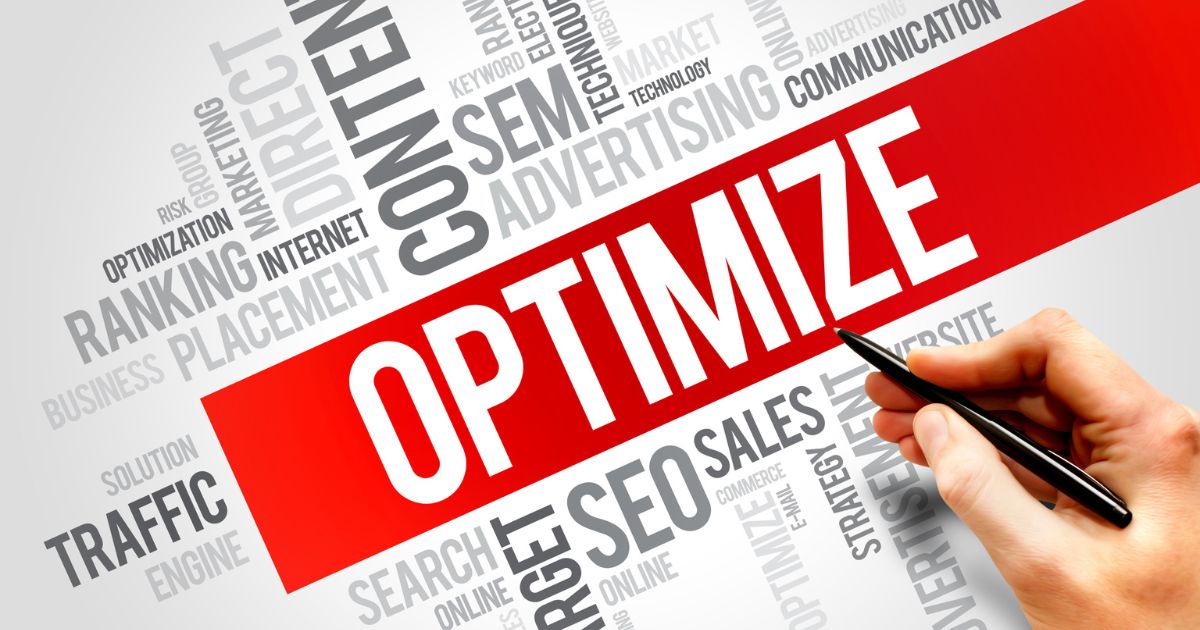
The Importance of A/B Testing
A/B testing, also known as split testing, is a critical component of any successful email marketing strategy. By comparing two versions of an email to see which performs better, you can make data-driven decisions that significantly enhance your campaigns' effectiveness.
Why A/B Testing is Essential for Email Marketing Success
Data-Driven Decisions: A/B testing removes the guesswork from your email marketing. It provides concrete data on what works and what doesn’t, allowing you to optimize your emails based on actual performance.
Enhanced Engagement: By testing different elements of your emails, you can identify what resonates most with your audience. This leads to higher open rates, click-through rates, and overall engagement.
Increased Conversions: Tweaking elements like subject lines, content, and CTAs can directly impact your conversion rates. A/B testing helps you find the winning combinations that drive more conversions and sales.
Key Elements to Test
To maximize the benefits of A/B testing, focus on these critical elements:
Subject Lines:
What to Test: Different wording, lengths, personalization, and emojis.
Impact: Subject lines are the first thing recipients see, making them crucial for driving open rates. Test variations to see which ones grab attention and entice recipients to open the email.
Content:
What to Test: Headlines, body text, images, and personalization.
Impact: The content of your email needs to engage and inform. Test different formats, tones, and messages to see what keeps readers interested and prompts them to take action.
Calls-to-Action (CTAs):
What to Test: Button text, color, placement, and design.
Impact: CTAs are the gateway to conversions. Test different CTAs to find out which ones most effectively encourage clicks and subsequent actions.
Conducting Effective A/B Tests to Improve Email Performance
Here’s a step-by-step guide to conducting effective A/B tests:
Define Your Goal: Determine what you want to achieve with your test. It could be higher open rates, increased click-through rates, or more conversions.
Formulate a Hypothesis: Based on your goal, create a hypothesis. For example, “Including the recipient's name in the subject line will increase open rates.”
Create Variations: Develop two versions of your email. Keep everything the same except for the element you are testing.
Select Your Sample: Choose a statistically significant sample size from your email list to ensure your results are reliable.
Run the Test: Send version A to one half of your sample and version B to the other half. Ensure the test runs simultaneously to avoid timing-related biases.
Analyze the Results: After a sufficient period, compare the performance of both versions using your defined metrics.
Implement the Winner: Use the winning version for your broader audience. Continue testing other elements to keep optimizing your emails.
Mastering Email Metrics
Tracking and analyzing email performance metrics is essential for understanding how your campaigns are performing and identifying areas for improvement.
Essential Metrics to Track
To gauge the success of your email campaigns, focus on these key metrics:
Open Rates:
What It Measures: The percentage of recipients who open your email.
Why It Matters: High open rates indicate that your subject lines and sender name are compelling. Low open rates suggest that these elements may need improvement.
Click-Through Rates (CTR):
What It Measures: The percentage of recipients who click on a link within your email.
Why It Matters: CTR shows how engaging your email content and CTAs are. Higher CTRs mean that your audience finds your emails relevant and interesting.
Conversion Rates:
What It Measures: The percentage of recipients who complete a desired action, such as making a purchase or filling out a form.
Why It Matters: Conversion rates are a direct indicator of your email campaign’s effectiveness in driving desired actions.
Top Tools for Tracking and Analyzing Email Performance
Utilize these tools to effectively track and analyze your email marketing metrics:
Google Analytics: Provides in-depth insights into how users interact with your website after clicking through from your emails.
Mailchimp: Offers robust email analytics, including open rates, click-through rates, and conversion tracking.
HubSpot: Provides comprehensive email marketing analytics and integrates seamlessly with your CRM for deeper insights.
Innovative Marketing Pro (IMP): Combines powerful analytics with automation, giving you detailed reports on every aspect of your email campaigns.
Data-Driven Strategies for Continuous Improvement
Using data to inform your strategy ensures that your email marketing efforts are always improving. Here’s how to leverage your metrics:
Identify Trends: Regularly review your metrics to spot trends and patterns. Use these insights to refine your strategies and tactics.
Segment Your Audience: Analyze how different segments respond to your emails. Tailor your content and offers to better meet the needs of each segment.
Optimize Frequency: Monitor engagement rates to determine the optimal frequency for your emails. Avoid overwhelming your audience while staying top-of-mind.
Refine Content and Design: Continuously test and tweak your email content and design based on performance data to keep your emails fresh and engaging.
Benchmark Performance: Compare your metrics against industry benchmarks to see how your campaigns stack up. Use this information to set realistic goals and expectations.
By continuously testing, analyzing, and optimizing your email marketing efforts, you can achieve better results and drive more meaningful engagement with your audience. This iterative approach ensures that your campaigns remain effective, relevant, and aligned with your business goals.
Ensuring Your Emails Reach the Inbox
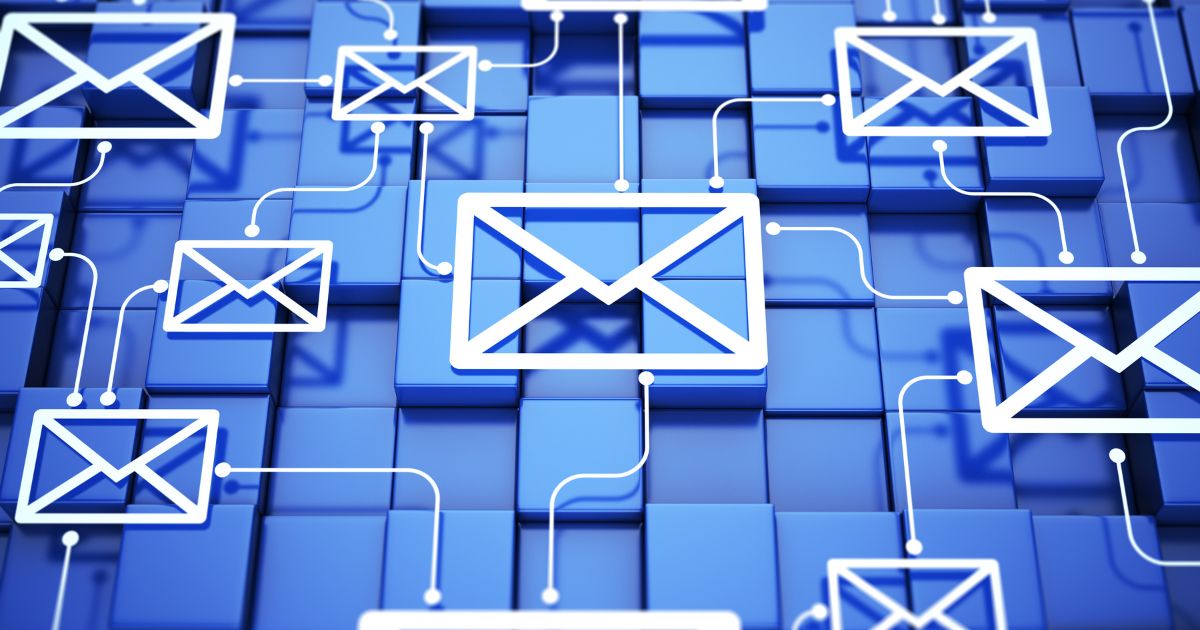
Boosting Email Deliverability
Email deliverability is a critical aspect of any email marketing campaign. No matter how compelling your content is, it’s ineffective if it doesn’t reach your audience’s inbox. Ensuring high deliverability means your emails get past spam filters and arrive where they’re supposed to be. Here’s how to boost your email deliverability effectively.
Factors that Influence Email Deliverability
Several factors determine whether your emails land in the inbox or get caught in spam filters. Understanding these factors can help you improve your deliverability:
Sender Reputation: Your sender reputation is a score ISPs assign based on your email sending practices. High bounce rates, spam complaints, and low engagement can harm your reputation, reducing deliverability.
Email Content: Certain words and phrases, excessive use of images, and poor HTML coding can trigger spam filters.
Engagement Metrics: ISPs monitor how recipients interact with your emails. Low open rates and high deletion rates signal poor engagement, affecting your deliverability.
Email Authentication: Implementing protocols like SPF, DKIM, and DMARC authenticates your emails, proving they are genuinely from you and not from a spammer.
Tips to Avoid Spam Filters and Maintain a Clean Email List
To keep your emails out of the spam folder and ensure they reach your audience, follow these tips:
Use Double Opt-In: Ensure subscribers confirm their subscription to verify their interest and consent. This reduces spam complaints and increases engagement.
Clean Your Email List Regularly: Remove inactive subscribers and invalid email addresses to maintain a healthy list. Regularly cleaning your list reduces bounce rates and improves deliverability.
Craft Clean HTML: Avoid excessive use of images and ensure your HTML code is clean and simple. Include plain-text versions of your emails to appeal to all email clients.
Avoid Spam Trigger Words: Steer clear of words and phrases that commonly trigger spam filters, such as “free,” “buy now,” and “limited time offer.”
Personalize Your Emails: Personalized emails tend to have higher engagement rates. Use recipients’ names and tailor content based on their preferences and behaviors.
Test Your Emails: Use tools like Litmus or Mail-Tester to check your emails for potential spam triggers before sending them.
Best Practices for Maximizing Inbox Placement
Implement these best practices to maximize your chances of landing in the inbox:
Segment Your Audience: Send targeted emails to specific segments of your audience. Relevant content increases engagement, which in turn boosts deliverability.
Monitor Your Metrics: Keep an eye on your open rates, click-through rates, and bounce rates. Regularly analyzing these metrics helps you identify and address deliverability issues.
Engage Your Subscribers: Encourage recipients to add you to their address book or whitelist your email address. This simple step can significantly improve deliverability.
Use a Recognizable Sender Name: Make sure your sender name is recognizable and trustworthy. This builds credibility and encourages recipients to open your emails.
Send Consistently: Establish a regular sending schedule. Inconsistent emailing can lead to spam complaints and reduced deliverability.
Staying Compliant with Email Regulations
Compliance with email marketing laws is not just about avoiding fines; it’s about respecting your audience’s privacy and building trust. Here’s how to ensure your email marketing practices are compliant with major regulations like GDPR and CAN-SPAM.
Understanding Email Marketing Laws: GDPR and CAN-SPAM
GDPR (General Data Protection Regulation): Applies to organizations that process the personal data of EU citizens. It requires explicit consent for email marketing, data protection measures, and the right for individuals to access and delete their data.
CAN-SPAM Act: A US law that sets requirements for commercial emails. It mandates clear identification of the sender, an honest subject line, a physical address, and an easy way to opt-out.
Best Practices for Ensuring Compliance
Follow these best practices to ensure your email marketing is compliant with GDPR, CAN-SPAM, and other regulations:
Obtain Explicit Consent: Use double opt-in to ensure subscribers explicitly consent to receive your emails. Document this consent as proof of compliance.
Provide an Easy Opt-Out: Include a clear and simple unsubscribe link in every email. Make sure opt-out requests are processed promptly.
Be Transparent: Clearly identify yourself and your business in your emails. Avoid misleading subject lines and be honest about the content of your emails.
Respect Privacy Requests: Honor requests from recipients to access, update, or delete their personal data. Make it easy for them to exercise these rights.
Maintain Accurate Records: Keep detailed records of consent, opt-ins, and opt-outs. This documentation can protect you in case of compliance audits.
Tools to Help Manage and Maintain Regulatory Compliance
Utilize these tools to streamline compliance management:
Email Marketing Platforms: Services like Mailchimp, Constant Contact, and Innovative Marketing Pro (IMP) offer built-in compliance features, including opt-in management and automatic inclusion of unsubscribe links.
Data Protection Tools: Tools like OneTrust and TrustArc help manage data privacy compliance by providing comprehensive solutions for consent management, data mapping, and regulatory reporting.
Email Authentication Tools: Implement SPF, DKIM, and DMARC to authenticate your emails, ensuring they comply with industry standards and improve deliverability.
Compliance Monitoring: Use tools like Litmus and GlockApps to test your emails for compliance issues before sending them. These tools can identify potential problems and suggest corrections.
By prioritizing email deliverability and compliance, you can ensure your messages reach the intended audience while building trust and credibility. A clean, compliant email marketing strategy not only boosts your campaigns' effectiveness but also fosters long-term relationships with your subscribers.
Drive Your Email Marketing to New Heights
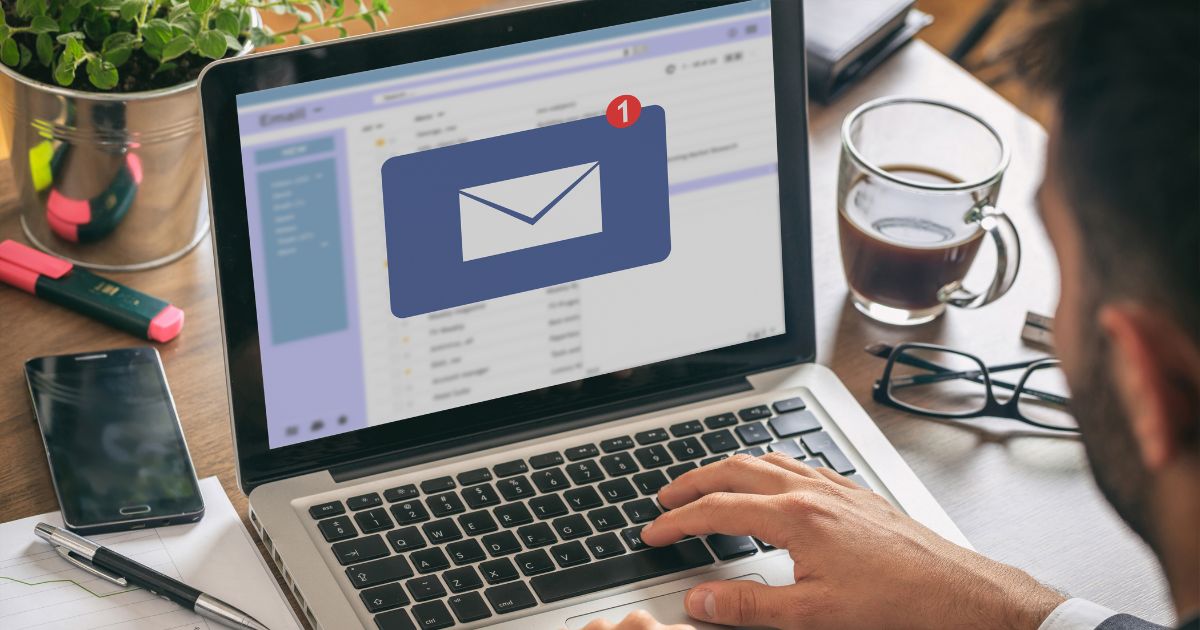
Recap: Advanced Techniques for Elevating Email Marketing
In this guide, we've explored several advanced techniques to take your email marketing to the next level. Let's summarize the key strategies that can transform your email campaigns from ordinary to extraordinary:
Audience Segmentation: By dividing your audience into targeted groups based on demographics, behaviors, and psychographics, you can send highly relevant content that resonates and drives engagement.
Personalization: Personalized emails create a deeper connection with your audience. From using the recipient's name to tailoring content based on their preferences and actions, personalization boosts open rates, click-through rates, and conversions.
Automation: Leveraging automated emails, such as welcome series, abandoned cart reminders, and follow-ups, streamlines your workflow and ensures timely, relevant communication with your audience.
Compelling Content: High-quality, engaging content is the heart of effective email marketing. Writing captivating copy, using dynamic content, and including clear CTAs drive action and foster loyalty.
Visual Design: Eye-catching email designs enhance user experience and readability. Using templates and following design best practices ensures consistency and professionalism.
A/B Testing: Continuous testing of elements like subject lines, content, and CTAs helps refine your emails and improve performance based on real data.
Analytics and Optimization: Tracking key metrics, such as open rates, click-through rates, and conversions, allows for data-driven decisions. Regularly analyzing these metrics helps you optimize your strategies for better results.
Deliverability and Compliance: Ensuring high deliverability and adhering to regulations like GDPR and CAN-SPAM protect your sender reputation and maximize inbox placement.
Encouragement: Motivate Readers to Implement These Strategies
Now that you've learned these advanced techniques, it's time to put them into action. Implementing these strategies can seem daunting, but remember, every step you take towards enhancing your email marketing efforts brings you closer to achieving your goals.
Start Small: Begin by making one or two changes at a time. For example, start with audience segmentation and personalized subject lines. As you see improvements, gradually incorporate more advanced techniques.
Stay Consistent: Consistency is key. Regularly send emails, maintain a consistent brand voice, and keep testing and optimizing your campaigns.
Be Patient: Results won't happen overnight. Give your strategies time to show results, and be ready to adapt based on what the data tells you.
Keep Learning: The world of email marketing is constantly evolving. Stay updated with the latest trends, tools, and best practices to keep your campaigns fresh and effective.
Blogs and Articles:
Ebooks and Guides:
Take Action and Stay Connected
As you continue your journey to mastering email marketing, we invite you to take action and stay connected with us. Here’s how you can stay informed, share your newfound knowledge, and access even more valuable resources.
Subscribe for Ongoing Email Marketing Tips
To ensure you’re always up-to-date with the latest email marketing strategies, trends, and best practices, subscribe to our newsletter. By joining our community, you’ll receive regular updates packed with actionable tips, expert advice, and inspiring case studies that can help you elevate your email marketing efforts.
Exclusive Insights: Get access to insider tips and exclusive content that isn’t available on our blog.
Regular Updates: Stay informed about the latest developments in email marketing and digital marketing as a whole.
Actionable Tips: Receive practical advice that you can implement immediately to improve your campaigns.
Encourage Sharing on Social Media
Knowledge is more powerful when shared. Help us spread the word about these advanced email marketing techniques by sharing this post on your social media channels. By doing so, you’ll not only reinforce your own learning but also help others discover valuable strategies to enhance their email marketing efforts.
Inspire Your Network: Share the knowledge and inspire others in your professional network to take their email marketing to new heights.
Join the Conversation: Engage with other marketing professionals and enthusiasts, exchanging ideas and experiences.
Build Your Personal Brand: Position yourself as a thought leader by sharing insightful and valuable content with your followers.
Download a Related Resource or Ebook for Deeper Insights
For those who want to dive deeper into the world of email marketing, we offer comprehensive resources that provide detailed insights and advanced strategies. Download our free eBook or access our resource library to continue your learning journey.
In-Depth Learning: Our eBook covers everything from advanced segmentation to sophisticated automation workflows, providing you with the tools and knowledge to excel.
Practical Guides: Step-by-step guides and actionable checklists that you can use to implement advanced techniques in your own campaigns.
Expert Advice: Learn from industry experts and successful case studies that demonstrate the power of effective email marketing.
By taking these actions, you’re not only enhancing your own skills and knowledge but also contributing to a community of like-minded professionals dedicated to mastering email marketing. Stay connected, stay informed, and continue to drive your email marketing to new heights. Together, we can achieve remarkable results.
Join The
Innovative Marketing Pro
15 Days FREE Trial!
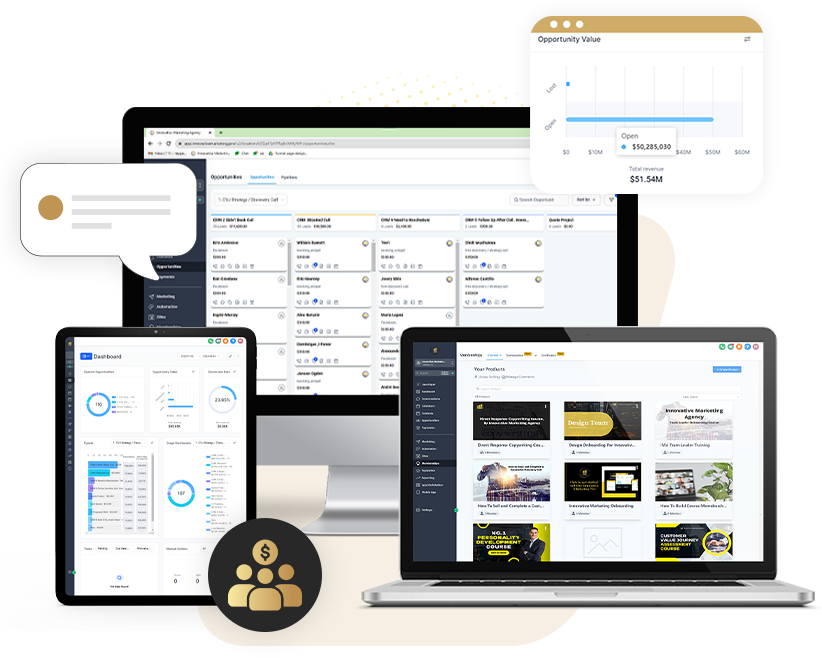
You Pay $0 Today
You Won't be charged until Free Trial Ends
No Commitment, Cancel Anytime
As a reminder we will email you 7 days before Trial Ends
Recent Posts
AI-Powered Lead Generation: Key Strategies for Business Success in 2024
Why Superior Customer Relationship Management Will Determine Winners and Losers
Choosing the Right Email Marketing Software for Your Business
The Ultimate Guide to Social Media Management Tools
Maximizing Conversions: The Best Funnel Builders Reviewed
Building Strong Online Communities: Best Platforms and Practices"
Boost Your Lead Quality: 10 AI-Powered Lead Generation Strategies
Innovative CRM Tools You Need to Know About in 2024
Join The
Innovative Marketing Pro
15 Days FREE Trial!

You Pay $0 Today
You Won't be charged until Free Trial Ends
No Commitment, Cancel Anytime
As a reminder we will email you 7 days before Trial Ends
Recent Posts
AI-Powered Lead Generation: Key Strategies for Business Success in 2024
Why Superior Customer Relationship Management Will Determine Winners and Losers
Choosing the Right Email Marketing Software for Your Business
The Ultimate Guide to Social Media Management Tools
Maximizing Conversions: The Best Funnel Builders Reviewed
Building Strong Online Communities: Best Platforms and Practices"
Boost Your Lead Quality: 10 AI-Powered Lead Generation Strategies
Innovative CRM Tools You Need to Know About in 2024
IM Agency Services
Marketing Research
Paid Advertising
Direct Response Copywriting
Funnels and Automations
Marketing Automation
Business Development
IM Pro Features
Lead Generation Automation
Sales Funnels
Customer Relationship Management
Courses Builder
Affiliate Builder
Invoicing
Team Scheduling
Email Automations
Pipelines and workflow
And Way More....
Address & Phone


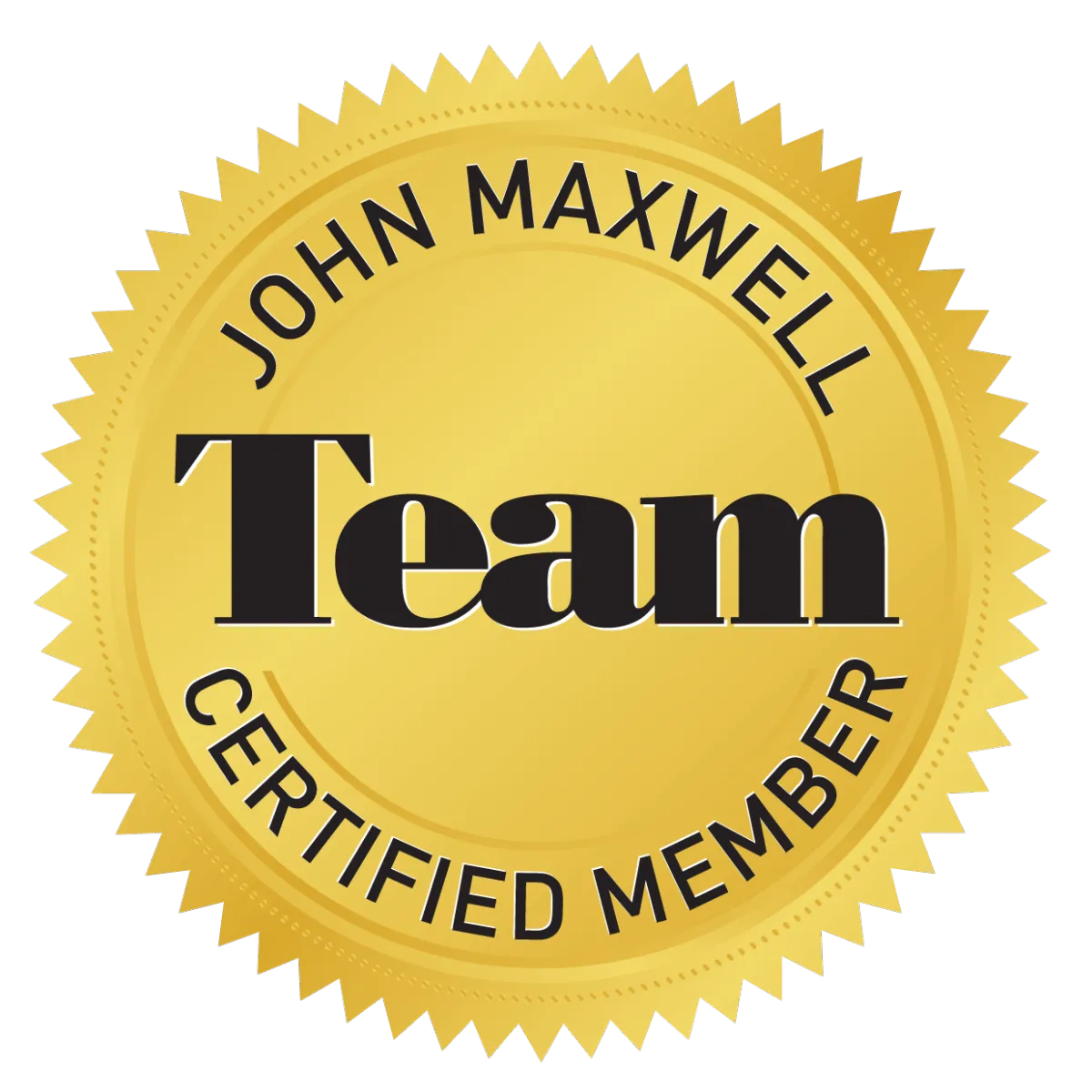

Innovative Marketing Agency
We Design, Build, & Optimize Campaigns
Copyright © 2026 Innovative Marketing Agency LLC

